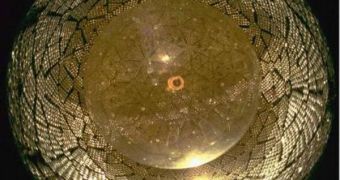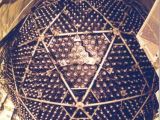While the Big Bang theory is still the most agreed-upon idea on how the Universe formed, the final faith of the Cosmos is still a subject of hot debate among astronomers and physicists. While some say that it will expand to a point where it will become a dark, empty void, others claim that it will eventually contract to a space the size of a dot, and then explode again into being. Trying to determine the most likely faith of everything, a three-day symposium, titled “The Chemistry and Physics of Neutrino Experiments,” will take place between August 16-18, during the 238th National Meeting of the American Chemical Society (ACS), in Washington DC.
Neutrinos (small neutral ones) are elementary particles that have some amazing properties, such as the ability to pass through ordinary matter without causing any disruption. They possess no electric charge, virtually no mass, and are also difficult to detect. Several billions of these particles pass through each single person on the planet each second, and most of them come from the Sun. They also pass through the Earth with little difficulty, and these traits are what make them so difficult to isolate and analyze.
However, gaining a better understanding of how these subatomic particles work is one of the main pursuits of science today, mostly because figuring them out carries vast implications for astronomy and cosmology. “The neutrino has the smallest observed mass for any elementary particle, but they appear in such astonishing numbers in the universe that they are a large portion of its mass. At the moment, neutrinos may be massive enough to account for more mass in the universe than all stars combined,” Los Alamos National Laboratory (LANL) physicist Steven Elliott, PhD, explains.
At the conference, more than two dozen studies related to neutrinos and their properties will be presented. Several years ago, it became obvious that only highly specialized detectors would be able to determine the locations and paths of neutrinos, so, several amazing, high-tech facilities were built. Now, data collected from them is used to answer the most fundamental questions about the Universe. These facilities include the MiniBooNE detector, the Super Kamiokande, the Sudbury Neutrino Observatory (SNO), the Borexino solar neutrino detector and the IceCube detector. Most of them rely on large amounts of fluid, such as heavy water and mineral oil, for their operation.
“Neutrino experiments are complicated undertakings that take years to design and construct and even longer to operate. The results tell us about fundamental physics, but developing the experiments is multidisciplinary, requiring expertise in physics but also other areas like organic, inorganic and nuclear chemistry,” Brookhaven National Laboratory (BNL) scientist Richard Hahn, PhD, who is also a co-organizer of the ACS symposium, adds.

 14 DAY TRIAL //
14 DAY TRIAL // 
